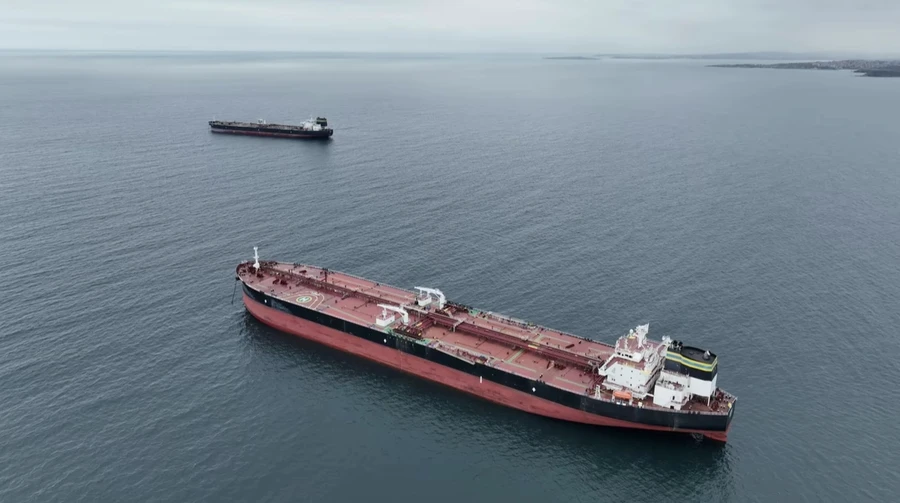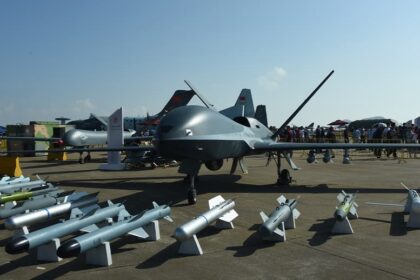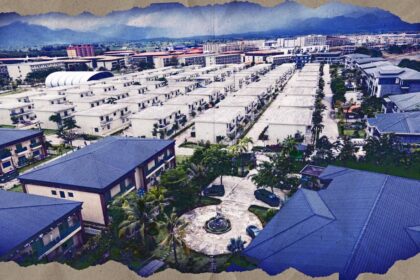Why Taiwan’s buying spree matters
Taiwan has emerged as the world’s largest buyer of Russian naphtha in the first half of 2025, a startling shift for a democracy that supports Ukraine and has aligned with Western sanctions on Moscow. A joint analysis by the Centre for Research on Energy and Clean Air and partner organizations finds that Taiwan bought naphtha from Russia worth about 1.3 billion dollars in the first six months of 2025. Average monthly purchases were nearly six times higher than the 2022 monthly average. Since February 2022 through June 2025, Taiwan imported 6.8 million tonnes of Russian naphtha valued at around 4.9 billion dollars, equal to roughly 20 percent of Russia’s exports of the product over that period.
The numbers jar with Taipei’s political stance. Taiwan joined sanctions after Russia’s full scale invasion and has provided Ukraine with 50 million dollars in bilateral aid. Yet Taiwan also paid more than 11.2 billion dollars for Russian energy since 2022. The report estimates that Russia gained about 1.7 billion dollars in mineral extraction taxes from these purchases, a sum it equates to the production of as many as 170,000 Gerbera drones used in attacks on Ukraine.
Naphtha sits at the heart of modern manufacturing. It is a key feedstock for petrochemical plants, which convert it into the building blocks of plastics, solvents and advanced materials used in electronics. Taiwan is deeply dependent on imported energy, meeting about 97 percent of its needs from overseas. Cheap naphtha has become a pressure valve for its petrochemical sector during a prolonged period of weak margins in Asia.
The surge in trade also reveals sharp differences between Taiwan’s state run and private sectors. State businesses, including Taipower and Chinese Petroleum Corporation, stopped buying Russian crude and light oil products, with the phase out completed by 2023 and into mid 2024. Private companies moved in the opposite direction. Formosa Petrochemical, one of the largest naphtha buyers in Asia, increased the share of Russian supply from about 9 percent before the war to a reported 90 percent in the first half of 2025. The company says the figure is closer to 85 percent based on its internal data. The report identifies Novatek, a Russian producer under United States sanctions, as the source of about 72 percent of the Russian naphtha that arrived in Taiwan during the study period.
What naphtha is and how chips depend on it
Naphtha is a liquid hydrocarbon mixture distilled from crude oil. Petrochemical plants process it in steam crackers to produce olefins such as ethylene and propylene and aromatics such as benzene and paraxylene. These compounds become resins, films, solvents and specialty chemicals that go into everything from smartphone casings and data center components to photoresists and packaging materials used in semiconductor fabs. In short, the chip economy draws from a wide chemical toolkit, and naphtha is a primary feedstock for producing many of those inputs.
Some petrochemical hubs, such as the United States, run crackers on ethane sourced from natural gas. Taiwan’s largest complexes are configured to run primarily on naphtha. Retooling crackers to different feedstocks can take years and enormous capital. Buyers in Taiwan use term contracts and spot cargoes to secure supplies, and the choice to take discounted Russian barrels in 2023 to 2025 eased cost pressure during a steep downturn in global olefin margins.
Industry data shows those discounts tempted buyers across Asia after traditional markets turned away. When European and South Korean demand for Russian naphtha dried up after the invasion, Russia diverted cargoes to Taiwan, China and India at favorable prices. On paper, this looks like a simple market rerouting. In practice, it intersects with sanction rules and political commitments.
Sanctions rules, price caps and alleged breaches
G7 and European partners created a price cap regime for Russian oil and refined products to limit Moscow’s revenue while keeping global supplies flowing. The regime allows shipping, insurance and other critical services from coalition countries only if crude and products are purchased at or below set thresholds. The cap for lower value refined products such as naphtha is 45 dollars per barrel. Higher value products such as diesel or gasoline have a 100 dollar cap. Compliance typically relies on attestations by traders and carriers that cargoes were bought under the cap.
The report on Taiwan’s purchases alleges a pattern that points to weak enforcement. It says about 88 percent of Russian naphtha cargoes bound for Taiwan were carried on vessels owned or insured in price cap coalition jurisdictions, even when trade data suggested that the effective price exceeded 45 dollars per barrel. The study also cites cases in other refined products, including a shipment on 16 September 2025 in which a tanker discharged diesel from the Vadinar refinery valued at 43.8 million dollars. Analysts argue that episodes like this highlight a gap between the letter of sanction rules and market realities.
Hsin Hsuan Sun, a director at Taiwan’s Environmental Rights Foundation and a co author of the study, warned that the economic logic of cheap feedstock collides with the island’s security and diplomatic interests.
Taiwan should not be financing the Kremlin’s war machine.
Price caps depend on a web of attestations, freight practices and insurance contracts. If any part of that chain breaks, the deterrent effect weakens. A compliance breach can be deliberate or the result of poor documentation. Either way, the credibility of the regime takes a hit, and companies operating in coalition jurisdictions face heightened legal and reputational exposure.
Two tracks inside Taiwan’s energy policy
Government controlled companies pulled back from Russian energy after 2022. Chinese Petroleum Corporation, commonly known as CPC, and other state run entities stopped sourcing Russian crude and naphtha by 2023 and into mid 2024. Private firms were not bound by an explicit import ban because Taipei did not prohibit Russian fossil fuel purchases. That gap created a two track reality: official policy and diplomacy on one side, market behavior by private buyers on the other.
Taiwan’s Ministry of Economic Affairs has said it tightened export controls to Russia for sensitive goods and that it is discussing compliance and risk with domestic companies. The ministry also signaled that it is reexamining control measures in light of evolving sanctions.
As international sanctions continue to expand, the ministry will further review relevant control measures and engage with domestic companies on compliance, while continuing to work with international partners to demonstrate its firm resolve to oppose aggression and uphold the international order.
Formosa Petrochemical in the spotlight
No company is more central to this story than Formosa Petrochemical. It is Asia’s largest single naphtha buyer and runs a sprawling complex at Mailiao on Taiwan’s western coast. The report says Formosa’s reliance on Russian cargoes jumped from about 9 percent before the invasion to 90 percent in the first half of 2025. It estimates that the Mailiao complex alone accounted for roughly 96 percent of Taiwan’s naphtha imports during that period. Company representatives dispute some figures, saying Russian naphtha made up about 85 percent of their purchases in 2025 to date, and that share reflects market conditions rather than a policy choice.
Formosa says it procures through open bidding and requires all sellers to comply with sanction rules and price caps. It has also indicated that it will comply with any future prohibitions and is weighing a reduction in Russian volumes to limit business risk.
Should international rules tighten further, or should our government issue new prohibitions, the company will comply immediately and fully support all relevant measures.
Industry trackers see some movement already. For October deliveries, market data indicates Formosa did not take Russian naphtha as offers were limited. Discount windows can close quickly when arbitrage shifts or when sellers reach contract limits, which also affects the short term flow of cargoes.
The regional market changed fast
Before the invasion, South Korean buyers and the Amsterdam, Rotterdam and Antwerp region in Europe were among the biggest destinations for Russian naphtha. That trade faded as sanctions and corporate risk policies took hold. Russia then reshaped its sales map. In 2025 it exported about 397,000 barrels per day of naphtha, with around 74,000 barrels per day flowing to Taiwan, largely for the Mailiao complex. China and India also took larger shares than before, absorbing barrels that Europe and South Korea no longer wanted.
South Korean refiners and petrochemical companies cut Russian naphtha to zero by July 2022 and diversified supply. Executives there acknowledge that the shift dented cost economics because Russian barrels were deeply discounted. They also say the legal and reputational risks outweighed the savings. That calculus adds pressure in Taiwan, where the economic case for cheap feedstock is clear but the diplomatic and compliance risks are rising.
Ship tracking firm Kpler estimates Taiwan averaged about 75,000 barrels per day of Russian naphtha imports so far in 2025, up from about 71,000 barrels per day in 2024. The first half of 2025 alone saw Taiwan’s naphtha imports from Russia grow about 44 percent compared with the first half of 2024. Coal tells a different story. Taiwan cut Russian coal purchases by about 67 percent in early 2025 from the previous year, a sign that some parts of the energy trade are already shifting away from Russian sources.
Security and diplomatic risk
The strategic backdrop is hard to ignore. Taiwan faces military pressure from China, which claims the island as its territory. Moscow and Beijing maintain close ties. Analysts worry that reliance on Russian energy gives potential leverage to a partner of China’s leadership in a crisis. Taiwan’s energy dependence compounds the risk. If supplies from Russia were disrupted for political reasons, the petrochemical and electronics sectors would face immediate pressure.
There is also reputation and alliance management. Democratic partners have pressed for stricter enforcement of sanctions on Russian fossil fuels. Nongovernmental organizations warn that a growing dependence on Russian barrels weakens Taiwan’s standing with the United States, the European Union and other allies at a time when Taipei seeks closer security and trade cooperation.
Puma Shen, a legislator from the Democratic Progressive Party, argued that Taiwan’s economic choices need to match its foreign policy commitments if it wants supportive partners in a crisis.
Taiwan’s trade and economic actions must align with our democratic partners, or we risk damaging our international reputation.
Supply risk is not theoretical. China has used economic coercion against other countries in Asia and Europe. If Russia, which values its ties with Beijing, reduced shipments under pressure or for strategic reasons, Taiwan would scramble to cover feedstock needs in a tighter spot market. That kind of shock could raise costs for plastic resins and other chemical inputs that feed into the island’s export machine, including components for the semiconductor industry.
How policy might shift
Public and political scrutiny has already prompted new signals from Taipei. Economy Minister Kung Ming hsin said this month that private refiners are willing to stop buying Russian naphtha if the European Union requests it. He added that the government has consulted with Brussels and industry and will respect EU and G7 norms. That stance suggests private companies could pivot quickly if formal restrictions arrive next year.
The Ministry of Foreign Affairs and the Ministry of Economic Affairs say Taiwan has expanded export controls to Russia for sensitive high tech items and that state firms no longer import Russian crude or light oil products. Regulators are reviewing the lack of import controls on light oil and are in talks with businesses about compliance. Trade data also shows tactical adjustments, such as a pause in Russian purchases for October deliveries due to limited offers.
Companies are weighing supply security against reputational and legal risk. Formosa has indicated that it will support any new prohibitions and is considering lowering its Russian share to reduce business risk. Industry groups say the key will be finding equivalent volumes from the Middle East, Southeast Asia and the United States at acceptable prices. Any shift will ripple through the petrochemical margin structure and could affect downstream costs in packaging, automotive parts and electronics.
What to Know
- Taiwan bought about 1.3 billion dollars of Russian naphtha in the first half of 2025, making it the largest buyer worldwide.
- From February 2022 to June 2025, Taiwan imported 6.8 million tonnes worth around 4.9 billion dollars, roughly 20 percent of Russia’s naphtha exports.
- State run firms stopped Russian crude and light oil, but private buyers, led by Formosa Petrochemical, sharply increased purchases.
- The report estimates Russia collected about 1.7 billion dollars in extraction taxes from Taiwan’s energy purchases, money it says could fund 170,000 Gerbera drones.
- About 72 percent of Russian naphtha shipments to Taiwan came from Novatek, which is under United States sanctions.
- The study alleges that 88 percent of the cargoes used shipping or insurance linked to the price cap coalition even when prices exceeded the 45 dollar per barrel cap for naphtha.
- Formosa says Russian barrels accounted for about 85 percent of its naphtha imports in 2025 to date and pledges to follow any new bans.
- Taiwan’s economy minister says private refiners are willing to stop buying Russian naphtha if the European Union requests it.
- South Korea stopped buying Russian naphtha in 2022 and replaced volumes, accepting higher costs to avoid sanction risk.
- Kpler data shows Taiwan averaged about 75,000 barrels per day of Russian naphtha in 2025, up from about 71,000 barrels per day in 2024.












